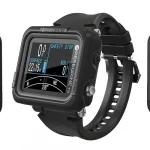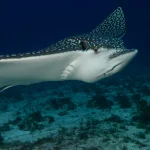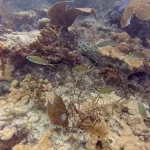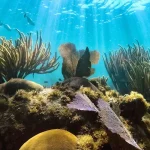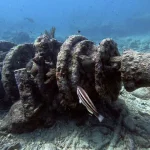Table of Contents
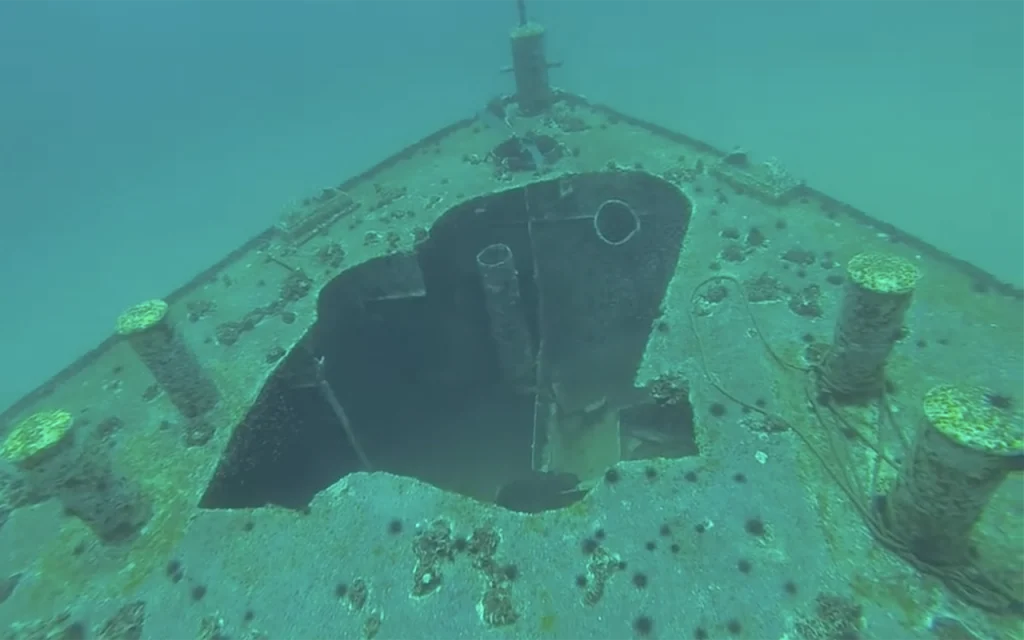
The YDT-14 and YDT-15 unique among Florida’s shipwrecks, offering a different kind of diving experience focused on planned exploration and marine life observation rather than historical discovery or treasure hunting.
Article at a Glance
- Historical Significance: Both YDT-14 (USS Phoebus) and YDT-15 (USS Suitland) are U.S. Navy vessels built during World War II, repurposed as diving tenders and intentionally sunk in 2000 to create artificial reefs.
- Diving Depths: YDT-14 rests at a depth of 100 feet, with its upper structure accessible at 65 feet, while YDT-15 is located at a similar depth, with its upper structure starting at 75 feet.
- Marine Biodiversity: The wrecks serve as artificial reefs, attracting diverse marine life, including barracudas, amberjack, bull sharks, and various other fish species, making them popular dive sites.
- Visibility and Conditions: Divers enjoy excellent underwater visibility and minimal currents at the YDT-14 site, enhancing the overall diving experience, while YDT-15 is partially buried, presenting some exploration challenges.
- Safety Features: Both wrecks were prepared for divers, with hazards removed and structures modified to ensure safer exploration, making them suitable for divers of varying skill levels.
- Exploration Opportunities: Key historical features include the wheelhouse and hull of YDT-14, which has wide cutouts for entry, while YDT-15 offers access to its upper structure despite being partially buried.
- Diving Accessibility: Located in the Florida Panhandle, both wrecks are part of the Florida Panhandle Shipwreck Trail, with local dive shops like Panama City Diving and Dive Pros in Pensacola offering trips to these sites.
Shipwreck Location Coordinates and Depth
DT-14 (USS Phoebus)
- Depth: 100 feet (30.5 meters)
- Coordinates: 30° 05.330′ N, 087° 09.640′ W
- Distance from shore: 18 nautical miles southeast off the Pensacola Pass
YDT-15 (USS Suitland)
- Depth: 98-100 feet (29.9-30.5 meters)
- Coordinates: 30° 05.267′ N, 087° 09.55′ W
- Distance from shore: 18 nautical miles southeast off the coast
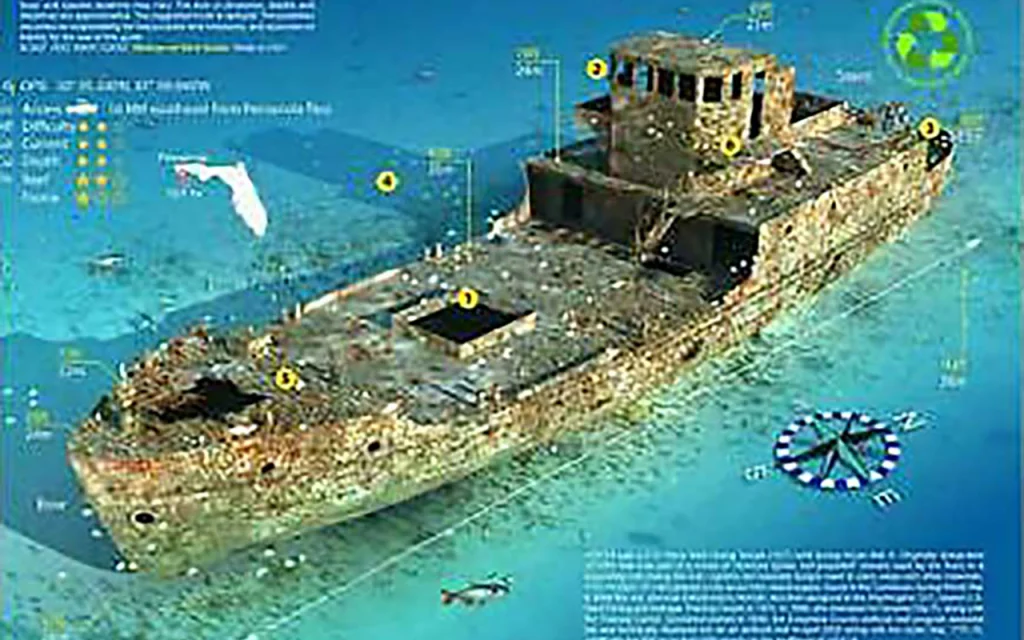
What Do Scuba Divers Say About This Ship
YDT-14 (USS Phoebus)
Divers consider the YDT-14 to be one of the top wrecks on the Florida Panhandle Shipwreck Trail. It offers several appealing features for divers:
- Excellent visibility: The wreck is located in an area with some of the best underwater visibility in the Florida Panhandle.
- Minimal currents: The chosen location experiences little current, making for easier diving conditions.
- Rich marine life: The ship is covered in sponges and corals, attracting various marine species. Divers can spot amberjack, bull sharks, and even green and loggerhead turtles sheltering in the wreck.
- Safe exploration: As an intentionally sunk artificial reef, many doorways, hatches, and hazards were removed, allowing for safer penetration dives.
- Suitable for different skill levels: While considered an intermediate dive due to its depth, Open Water Divers can enjoy the shallower parts of the wreck.
YDT-15 (USS Suitland)
Divers report that the YDT-15 offers a slightly different experience:
- Partially buried: Gulf storms have buried the YDT-15 up to its decks, limiting some exploration options.
- Upper structure accessible: Divers can explore the wreck’s upper structure starting at around 75 feet.
- Safe design: Like its sister ship, the decking and bridge were removed to make the wreck safer for divers.
- Marine life: Barracudas are often seen residing around the wreck.
What Kind of Marine Life Can Be Found on The Ship
Marine Life on YDT-14 (USS Phoebus)
- Barracudas: These are frequently mentioned as residents of the wreck.
- Sponges and corals: The ship’s structure is covered with these organisms, providing a habitat for other marine species.
- Various fish species: While not specifically named in the search results, artificial reefs like this typically attract a diverse array of fish.
Marine Life on YDT-15 (USS Suitland)
General Marine Life on Artificial Reefs in the Area
While not specific to these wrecks, similar artificial reefs in the area are known to attract:
- Amberjack: These are mentioned as common around nearby structures like the Chevron Rig.
- Spadefish and minnows: These are noted to frequent other nearby wrecks like the Pete Tide II.
Key Information
| Feature | YDT-14 (USS Phoebus) | YDT-15 (USS Suitland) |
|---|---|---|
| Year Built | 1942 | 1943 |
| Original Name | YF-294 | YF-336 |
| Designation | Redesignated as YDT-14 in 1974 | Redesignated as YDT-15 in 1971 |
| Sunk As Artificial Reef | April 2000 | April 2000 |
| Depth | 100 feet (30.5 meters) | 98-100 feet (29.9-30.5 meters) |
| Upper Structure Depth | 65 feet (19.8 meters) | 75 feet (22.9 meters) |
| Coordinates | 30° 05.330′ N, 087° 09.640′ W | 30° 05.267′ N, 087° 09.55′ W |
| Marine Life | Barracudas, amberjack, bull sharks, turtles | Barracudas, various fish species |
| Historical Features | Wheelhouse, hull with wide cutouts | Upper structure, partially buried |
| Diving Conditions | Minimal currents, excellent visibility | Partially buried, some access limitations |
| Dive Shop Recommendations | Panama City Diving, Dive Pros in Pensacola | Similar local dive shops likely offer trips |
| Part of Diving Trail | Florida Panhandle Shipwreck Trail | Florida Panhandle Shipwreck Trail |
What Makes YDT-14 and YDT-15 a Unique Diving Experience
Intentional Design for Diving
- Both ships were intentionally prepared and sunk as artificial reefs.
- Doorways, hatches, and potential hazards were removed to make the wrecks safer for divers to explore.
- The decking and bridge were removed on YDT-15 to enhance diver safety.
Ideal Location and Conditions
- YDT-14 was placed in a location chosen for optimal diving conditions.
- The site experiences minimal currents, making for easier diving.
- The area offers some of the best underwater visibility in the Florida Panhandle.
Rich Marine Life
- The wrecks are covered in sponges and corals, providing habitats for various marine species.
- Divers can encounter barracudas, which are known to reside around both wrecks.
- Other marine life spotted includes amberjack, bull sharks, and even green and loggerhead turtles.
Historical Significance
- Both ships served in the U.S. Navy from the 1940s until 2000, with careers spanning various locations.
- They were redesignated as diving tenders in the 1970s before being repurposed as artificial reefs.
Accessibility for Different Skill Levels
- While considered intermediate dives due to depth, parts of the wrecks are accessible to Open Water Divers.
- YDT-14’s upper structure can be explored around 65 feet, with the waterline at 100 feet.
- YDT-15’s upper structure starts at 75 feet.
Part of a Larger Diving Trail
- Both wrecks are part of the Florida Panhandle Shipwreck Trail, offering divers a series of interesting sites to explore.
How Does The YDT-14 and YDT-15 Compare to Other Shipwrecks in Florida
Historical Context
- Most famous Florida shipwrecks are from the colonial era (16th-18th centuries), often Spanish treasure ships or merchant vessels.
- YDT-14 and YDT-15 are much more recent, being U.S. Navy vessels from the 20th century.
Intentional Sinking
- Many Florida shipwrecks resulted from natural disasters like hurricanes or navigational errors.
- YDT-14 and YDT-15 were intentionally sunk in 2000 to create artificial reefs, making them planned dive sites.
Accessibility and Safety
- Older shipwrecks are often in various states of decay and can be hazardous to explore.
- YDT-14 and YDT-15 were prepared for divers, with hazards removed and structures modified for safer exploration.
Marine Life
- While all shipwrecks eventually become habitats, YDT-14 and YDT-15 were specifically designed as artificial reefs to promote marine life.
- They lack the centuries of marine growth found on older wrecks but offer a more controlled environment for observing ecosystem development.
Depth and Location
- Many historic Florida wrecks are in very shallow water or partially exposed on beaches.
- YDT-14 and YDT-15 are in deeper water (95-100 feet), offering a more challenging dive experience.
Treasure and Artifacts
- Florida’s famous shipwrecks often contained valuable cargo like gold, silver, or other treasures.
- As modern naval vessels, YDT-14 and YDT-15 don’t offer treasure hunting opportunities but instead focus on the diving and marine life experience.
Preservation State
- Historic wrecks are often highly degraded or scattered across the seafloor.
- YDT-14 and YDT-15 are relatively intact, offering a more complete ship structure for divers to explore.
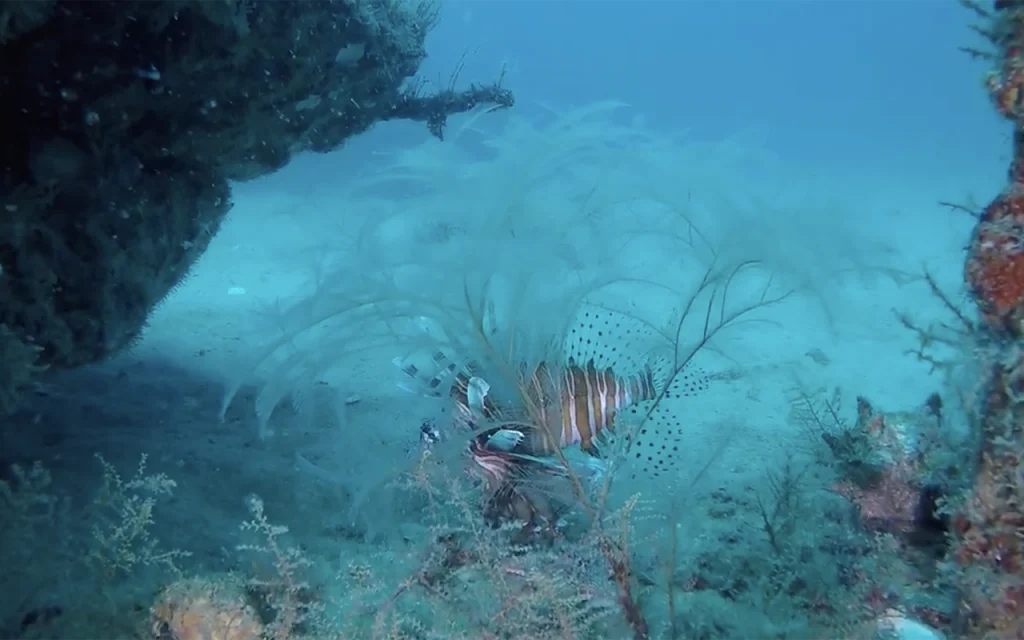
What is The Full History of These Ships
YDT-14 (USS Phoebus)
- Built in 1942 in Erie, Pennsylvania
- Originally named YF-294, a self-propelled covered lighter
- Assigned to the 10th Naval District during World War II as an inter-island supply vessel
- Reassigned to the 5th Naval District in 1947 and renamed Phoebus
- Redesignated as a diving tender (YDT-14) in March 1974
- Served in various locations including San Juan Harbor, Norfolk Harbor, and Key West
- Intentionally sunk as an artificial reef in April 2000
YDT-15 (USS Suitland)
- Built in 1943
- Originally named YF-336, a self-propelled covered lighter
- Initially placed in the 3rd Naval District at New York City
- Reassigned to the Potomac River Naval Command
- Named Suitland in 1965 at the 5th Naval District, Norfolk, VA
- Redesignated as a diving tender (YDT-15) in 1971
- Intentionally sunk as an artificial reef alongside YDT-14 in April 2000
Both ships were 132.5-foot steel-hulled U.S. Navy vessels that served for several decades before being repurposed as artificial reefs. They were prepared for their new role by having hazards removed to make them safer for divers.
The YDT-14 remains more accessible to divers, with its upper structure at 65 feet and waterline at 100 feet. The YDT-15 has been partially buried by Gulf storms up to its decks, but its upper structure can still be explored starting at 75 feet.
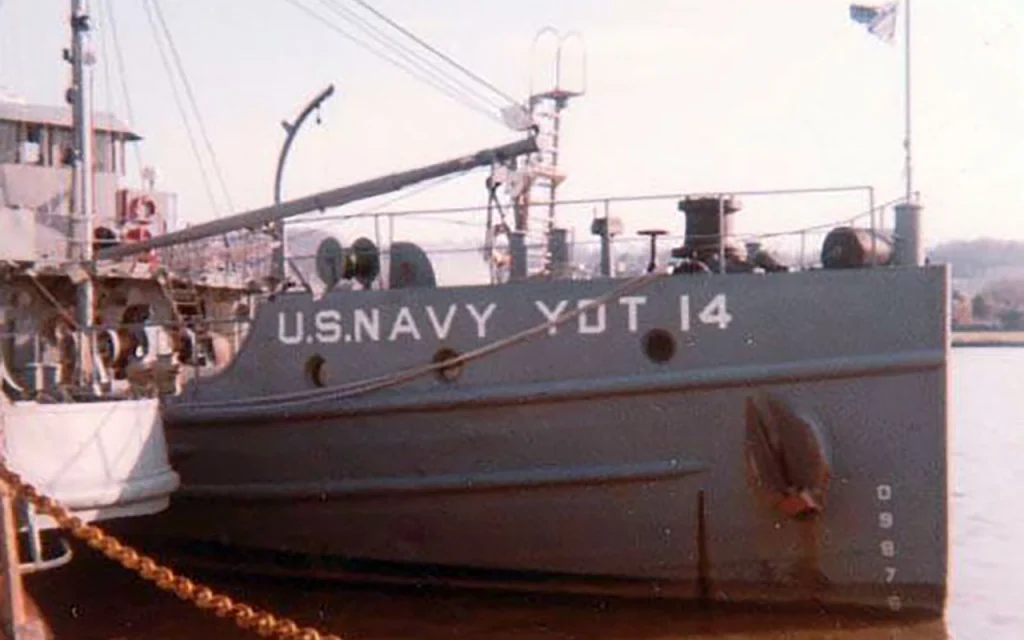
What Historical Features Can Still Be Identified on The YDT-14 and YDT-15 Wrecks
YDT-14 (USS Phoebus)
- Upper structure: Can be explored around 65 feet depth.
- Wheelhouse: Starts at a depth of 65 feet and can be swum through.
- Hull: Has wide cutouts that divers can enter.
- Bridge area: Surrounding decking has been removed to allow easier access.
- Waterline: Visible at 100 feet depth.
YDT-15 (USS Suitland)
- Upper structure: Can be found starting at 75 feet depth.
- Decking and bridge: These were removed to make the wreck safer for recreational divers.
Common features for both wrecks:
- Overall structure: Both are 132.5-foot steel-hulled U.S. Navy vessels.
- Artificial reef modifications: Hazards, doorways, and hatches were removed to make them safer for divers.
What Safety Measures Are in Place for Divers Visiting the YDT-14 and YDT-15
- Intentional preparation: Both ships were specifically prepared as artificial reefs, with hazards, doorways, and hatches removed to make them safer for divers to explore.
- Accessible depths: The upper structures of both wrecks are at relatively accessible depths for experienced divers. YDT-14’s upper structure can be explored around 65 feet, while YDT-15’s starts at 75 feet.
- Minimal currents: The YDT-14 was placed in a location chosen for optimal diving conditions, including minimal currents, which makes for safer diving.
- Visibility: The area offers some of the best underwater visibility in the Florida Panhandle, enhancing diver safety.
- Suitable for different skill levels: While considered intermediate dives due to depth, parts of the wrecks are accessible to Open Water Divers, allowing for appropriate challenge based on experience.
- Marine life considerations: Divers are made aware of resident marine life, such as barracudas, which helps in preparing for potential encounters.
- Dive planning resources: Detailed information about the wrecks, including depth, location coordinates, and site characteristics, is readily available to assist in dive planning.
- Part of established dive trail: Being part of the Florida Panhandle Shipwreck Trail means these sites are likely monitored and maintained to some degree for diver safety.
Dive Shops That Provide Diving Trips to These Shipwrecks
- Panama City Diving
- Address: 106 Thomas Dr, Panama City Beach, FL 32408
- Phone: (850) 588-8077
- Open daily from 8 AM to 6 PM
- Website: https://panamacitydiving.com
- Dive Pros in Pensacola
- Mentioned as a local trail partner where divers can obtain Florida Panhandle Shipwreck Trail Passports
North Florida Wrecks
- USS Oriskany
- USS Massachusetts
- SS Tarpon
- SS Gulf America
- Empire Mica
- USS Chippewa
- Avocet
- Black Bart
- The Vamar
- San Pablo
- USS Narcissus
- The Loftus Wreck
- The Dorothy Louise
- The Mizpah
- MV Janet
- The Eidsvag
- YDT-14 and YDT-15
- USS Strength
- Miss Louise
- The Lulu
- PC-1174
- Three Coal Barges
- USS Accokeek (ATA-181)
- El Dorado
- The Grey Ghost
- The Pete Tide II
- Red Sea Tug

